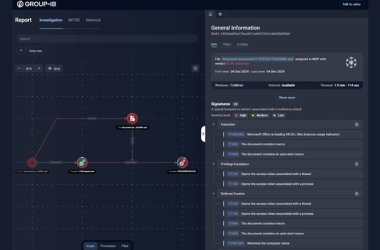The Windows version of Crisis, a piece of malware discovered in July, is capable of infecting VMware virtual machine images, Windows Mobile devices and removable USB drives, according to researchers from antivirus vendor Symantec.
Crisis is a computer Trojan programme that targets Mac OS and Windows users. The malware was discovered by antivirus vendor Intego on July 24 and can record Skype conversations, capture traffic from instant messaging programmes like Adium and Microsoft Messenger for Mac and track websites visited in Firefox or Safari.
Crisis is distributed via social engineering attacks that trick users into running a malicious Java applet. The applet identifies the user’s OS — Windows or Mac OS X — and executes the corresponding installer.
“The threat searches for a VMware virtual machine image on the compromised computer and, if it finds an image, it mounts the image and then copies itself onto the image by using a VMware Player tool,” said Symantec researcher Takashi Katsuki in a blog post on Monday. “This may be the first malware that attempts to spread onto a virtual machine.”
Security researchers from antivirus vendor Kaspersky Lab, whose products detect the Crisis malware as Morcut, have confirmed the existence of this functionality in the Trojan program.
“This function allows Morcut to steal and intercept data from virtual machines including financial information used for online shopping,” said Kaspersky Lab malware expert Sergey Golovanov via email on Tuesday.
Malware authors are putting significant efforts into making sure that new variants of their Trojan programmes are not detected by antivirus products when they are released.
In response, some security conscious users are performing online banking, online shopping and other potentially sensitive activities from virtual machines. This allows them to use an OS installation that’s unlikely to be altered by malware every time they need to perform such tasks.
Many malware threats contain routines that prevent their own execution inside virtual machines. This is done in order to prevent analysis by security researchers, who commonly use virtualised environments to observe what malicious programmes do.
Morcut doesn’t do this, Golovanov said. “[Its] aim is to get inside as many systems it can to steal the maximum amount of information.”
“This may be the next leap forward for malware authors,” Katsuki said.
In addition to infecting VMware virtual machines, the Windows version of Crisis also installs rogue modules on Windows Mobile devices connected to compromised systems.
However, the Symantec researchers don’t know what these modules do yet. “We currently do not have copies of these modules and hence we are looking for them so we can analyse them in greater detail,” Katsuki said.
The number of computers infected by Crisis/Morcut is not very high at the moment. Kaspersky Lab has identified a total of 21 victims located in Italy, Mexico, Iran, Turkey, Iraq, Oman, Brazil, Kazakhstan, Kyrgyzstan and Tajikistan, Golovanov said. “This may not account for all the victims as other vendors may have detections on their systems too.”
Security researchers from Intego previously said that sections of code from Crisis suggest a connection with a commercial Trojan programme developed by an Italian company called HackingTeam and licensed to law enforcement and intelligence agencies for surveillance purposes.
The low number of infections and their wide geographic distribution could suggest that this malware is used in targeted attacks rather than widespread ones.






